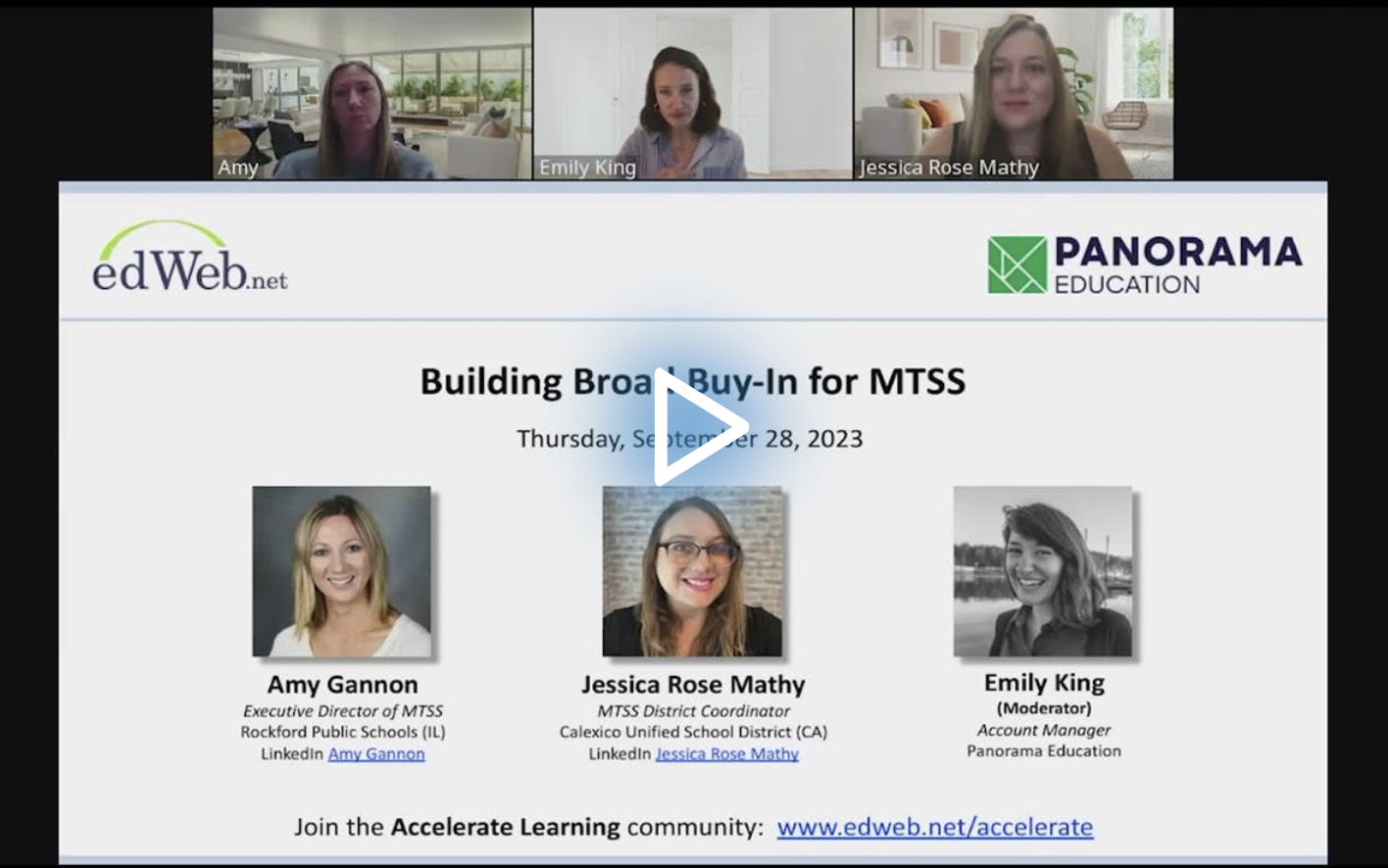6 Strategies for a Successful MTSS Implementation
Watch the RecordingListen to the Podcast
Implementing Multi-Tiered Systems of Support (MTSS) presents districts with many challenges because it requires a fundamental change in how all personnel interact with and support students.
The key, according to the panelists during the edLeader Panel “Building Broad Buy-In for MTSS,” is to build support across all stakeholders before taking action. Amy Gannon, Executive Director of MTSS for Rockford Public Schools (IL), and Jessica Rose Mathy, MTSS District Coordinator for Calexico Unified School District (CA), offered six strategies to put leaders on a path to successful implementation.
1. Evaluate what you’ve already done
Whether this is the first time your district has tried to embrace MTSS or there have been previous efforts, you need to understand what elements of MTSS are already in place.
Figure out what’s working, what’s not, and if an implementation was already tried, why it didn’t work. Educators don’t want to think you’re ignoring the work they’ve done, and they don’t want a repeat of the failures.
2. Talk to all of the stakeholders
This is an overhaul of how you approach education, so you need to understand the needs at every level—parents, classroom teachers, support staff, etc. What do they know about MTSS? What areas do they think you should address first? What training do they need? How do they view success?
This is also when you start laying the framework for support and get them excited about what MTSS can bring to their schools.
3. Develop a districtwide mission and vision
To ensure buy-in and support across the district, MTSS needs to be incorporated into the strategic plan as well as the school mission. This is a high-level overview of what you want to accomplish with MTSS.
4. Establish needs and goals for each building
Once you have the high-level goals, you need to set objectives for each site. For instance, one might be having issues with attendance, while another has school climate challenges. In addition to talking with each principal, gather any data you have on the students to make informed decisions.
Along with the goals for the year, you also need to have metrics in place so you know how you will measure success. Goals will most likely change from year to year.
5. Integrate support for MTSS as a vital component of staff development
First, you need to know your people. What are their roles and responsibilities? What capacity do they have to support MTSS? Then, create a PD plan to address those individual needs. Next, create a compliance manual—one that changes as needed—to guide staff outside of their training.
You will also need to cultivate MTSS site teams or leaders who can provide one-on-one advice as well as help oversee initiatives. Finally, don’t roll out all of the training at once. Start with school leaders and interventionists, for instance, and then move on to each group. This gives you a chance to evaluate training and implementation along the way.
6. Have a platform that can help you gather and analyze the data
Implementing MTSS means gathering new data and understanding how it’s impacting your goals. Both panelists agreed that districts need a platform that can capture information specific to MTSS. Then, school leaders will have the data they need to help them with their next iteration.
Learn more about this edWeb broadcast, Building Broad Buy-In for MTSS sponsored by Panorama Education.
Watch the RecordingListen to the Podcast
Join the Community
Accelerate Learning is a free professional learning community that helps educators learn and share ideas for meeting students where they are in their learning and accelerating their progress.

Blog post by Stacey Pusey, based on this edLeader Panel.





Comments are closed.